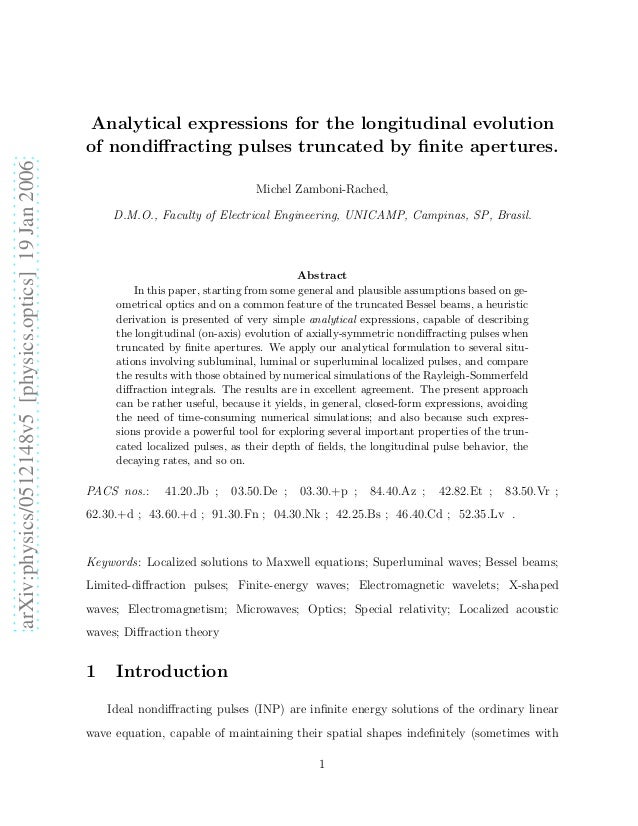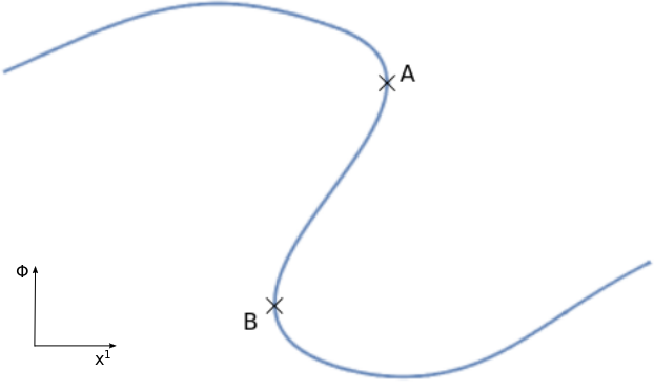

If the experiment is correct, the Maxwell equations in the laboratory system are grossly in error at microwave frequencies, independently of any considerations of relativity theory. Therefore, the reported experimental result cannot be reconciled with the Maxwell equations. It disagrees with the wave equation which gives a group velocity 1 c 2 ∂ 2 ψ ∂t 2 = ∇2 ψ, (3) vg = c cosθ (4) for the Bessel beam of Eq. Putting aside the experimental result, I point out here that Eq. The authors found experimentally that signals moved in the z direction with speed equal to vexp = c/cosθ, (2) a superluminal speed that they assert agrees with the group velocity derived from Eq. The packets consist of square pulses, many wavelengths in extent, which are chopped segments of the Bessel beam J0(ρk sinθ) exp (1) moving in the z direction, where θ is a parameter around 20 ◦, ρ is the cylindrical radial variable, J0 is the Bessel function, and ω = kc. Derivation of the wave equation The wave equation is a simpli ed model for a vibrating string (n 1), membrane (n 2), or elastic solid (n 3).

For example, these solutions are generally not C1and exhibit the nite speed of propagation of given disturbances. Abstract: By a generalized bidirectional decomposition method, we obtain new Superluminal localized solutions to the wave equation (for the electromagnetic case, in particular) which are suitable for arbitrary frequency bands several of them being endowed with finite total energy. Lamoureux University of Calgary Seismic Imaging Summer School August 711, 2006, Calgary Abstract Abstract: We look at the mathematical theory of partial dierential equations as applied to the wave equation. tions of Laplaces equation or the heat equation. have reported an experiment in which microwave packets appear to travel in air with a speed substantially greater than c, the normal speed of light in vacuum. The mathematics of PDEs and the wave equation Michael P.


 0 kommentar(er)
0 kommentar(er)
